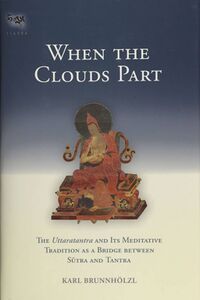Explore: Difference between revisions
((by SublimeText.Mediawiker)) |
No edit summary |
||
| Line 292: | Line 292: | ||
</div> | </div> | ||
<div class="row maitreya-gradient m-0 py-4"> | <div class="row maitreya-gradient m-0 py-4"> | ||
<div class="col-12 section-header mt-2 mb-4 py-2 pl-lg-4 border-bottom-rightfade">Translation | <div class="col-12 section-header mt-2 mb-4 py-2 pl-lg-4 border-bottom-rightfade">Tsadra Supports Translation at the University of Vienna</div> | ||
<div class="col-lg-9 pl-lg-5 pr-lg-4"> | <div class="col-lg-9 pl-lg-5 pr-lg-4"> | ||
<div class="sub-section-header mt-4 mt-lg-2 mb-2 border-bottom-rightfade"> | <div class="sub-section-header mt-4 mt-lg-2 mb-2 border-bottom-rightfade">Translating the ཐེག་པ་ཆེན་པོ་རྒྱུད་བླ་མའི་བསྟན་བཅོས་ཀྱི་འགྲེལ་བཤད་དེ་ཁོ་ན་ཉིད་རབ་ཏུ་གསལ་བའི་མེ་ལོང་།</div> | ||
<div> | <div> | ||
[[ | Tsadra Foundation is excited to support the translation of one of the most important commentaries in the Tibetan tradition. Klaus-Dieter Mathes and two of his graduate students will work on [[Gö Lotsāwa Zhönu Pal]]'s (1392–1481) extensive [[Books/'Gos_Lo_tsā_ba_gZhon_nu_dpal's_Commentary_on_the_Ratnagotravibhāgavyākhyā|commentary on the Gyü Lama]] starting in 2021. In this special text we find not only a complete 15th-century Tibetan version of the [[Texts/Ratnagotravibhāga_Mahāyānottaratantraśāstra|Gyü Lama]] (including [[Asaṅga]]'s commentary), but also a critical philological review of the earlier Tibetan canonical translation by [[Ngok Lotsāwa Loden Sherab]] (1059–1109) against the background of the original Sanskrit about which Gö Lotsāwa was exceptionally knowledgeable. Gö Lotsāwa's study, rife with quotations from a great variety of texts from both the Kangyur and Tengyur, thus offers representative samples from all strands of Indian Buddhist literature. Gö Lotsāwa's Gyü Lama commentary is not only the first available commentary belonging to the [[Key_Terms/Tsen_Tradition|meditation tradition]] ([[Key_Terms/Tsen_Tradition|Tib. sgom lugs]]) of the Maitreya works, but also includes a tradition of teaching Mahāmudrā based on the sūtras and the works of Maitreya. | ||
</div> | </div> | ||
</div> | </div> | ||
Revision as of 16:42, 31 July 2020

See all presentations
Klaus-Dieter Mathes
Ngawang Jorden
Jacqueline Stone
Tsadra Foundation is excited to support the translation of one of the most important commentaries in the Tibetan tradition. Klaus-Dieter Mathes and two of his graduate students will work on Gö Lotsāwa Zhönu Pal's (1392–1481) extensive commentary on the Gyü Lama starting in 2021. In this special text we find not only a complete 15th-century Tibetan version of the Gyü Lama (including Asaṅga's commentary), but also a critical philological review of the earlier Tibetan canonical translation by Ngok Lotsāwa Loden Sherab (1059–1109) against the background of the original Sanskrit about which Gö Lotsāwa was exceptionally knowledgeable. Gö Lotsāwa's study, rife with quotations from a great variety of texts from both the Kangyur and Tengyur, thus offers representative samples from all strands of Indian Buddhist literature. Gö Lotsāwa's Gyü Lama commentary is not only the first available commentary belonging to the meditation tradition (Tib. sgom lugs) of the Maitreya works, but also includes a tradition of teaching Mahāmudrā based on the sūtras and the works of Maitreya.
Ringu Tulku
Tokpa Tulku
I.28
རྫོགས་སངས་སྐུ་ནི་འཕྲོ་ཕྱིར་དང་། །
དེ་བཞིན་ཉིད་དབྱེར་མེད་ཕྱིར་དང་། །
རིགས་ཡོད་ཕྱིར་ན་ལུས་ཅན་ཀུན། །
རྟག་ཏུ་སངས་རྒྱས་སྙིང་པོ་ཅན། །
Since suchness is undifferentiable,
And because of the disposition,
All beings always possess the buddha heart.
संबुद्धकायस्फरणात् तथताव्यतिभेदतः
गोत्रतश्च सदा सर्वे बुद्धगर्भाः शरीरिणः
佛法身遍滿 真如無差別
皆實有佛性 是故說常有
Click to view all verses





